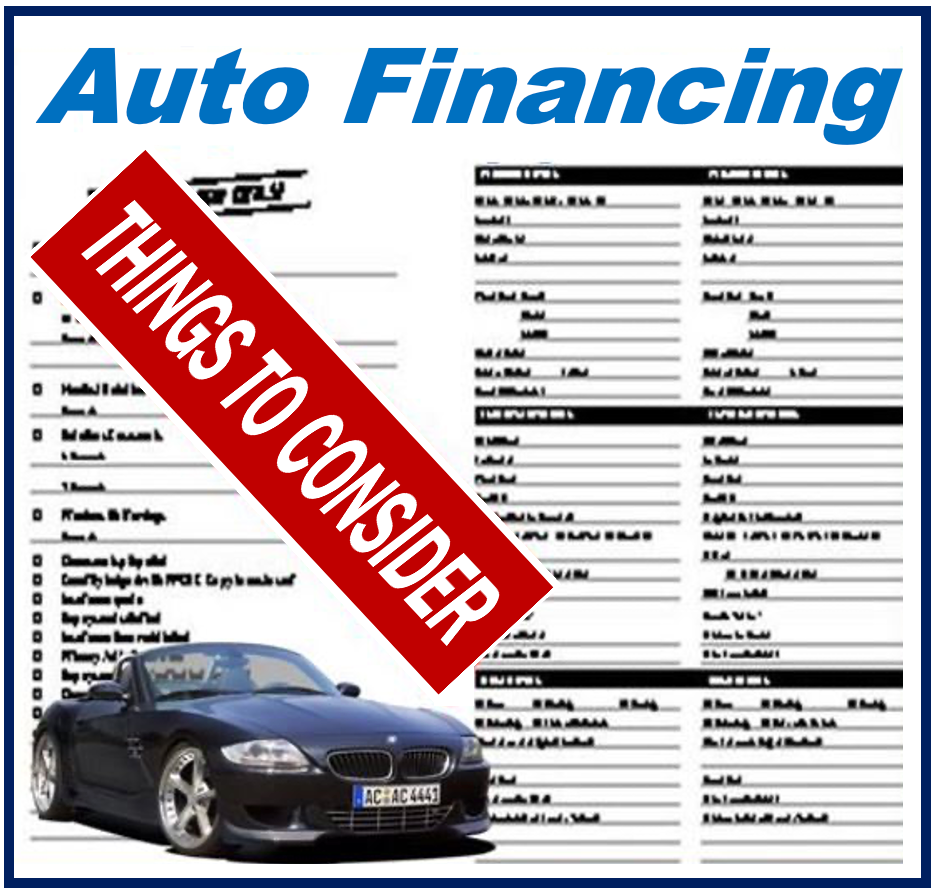There are many things to consider when applying for auto financing. The interest rate is one of the most important factors, but you must consider other factors as well. The yo-yo effect can result in a five percent higher interest rate than is necessary for a reasonable car loan. The interest rate you are required to pay on your car loan is based on your financial situation, not your credit score. It may be difficult to pay back the loan if you have negative equity in your vehicle, but if you have good credit, you can still buy a car at a lower price.

Negative equity affects auto financing
If you’ve found that your car loan has negative equity, there are a few things you should do. First, contact your lender to discuss your options. To start, log in to your account to determine the exact value of your car. Next, compare that value to the amount you owe on the car. If your car is worth $15k but you owe $20k on it, you have negative equity of $5k.
The longer the term on an auto loan, the more likely it is that the borrower will have negative equity. This is especially true if the car is more than three years old or is already scrapped. Luckily, many auto lenders will extend the term to 48 months if it’s not already past its prime. However, it’s important to remember that you’ll have to pay higher interest rates if you have negative equity.
Manufacturer incentives aren’t negotiable
If you’re shopping for a new car, you should know that automakers usually offer various types of incentives to their customers. These incentives can range from lower finance rates to cash back. To take advantage of these offers, you should ask the dealer about the different financing options. While some of these incentives are not negotiable, others may be combined with third-party financing options. Combining these two options can often result in a lower monthly payment than using a manufacturer’s financing.
In addition to manufacturer incentives, dealerships can also offer special financing options. While it’s a great idea to get a low price, you should remember that you may have to pay extra fees for documents. Document fees are a common cost of doing business with dealerships. In some cases, they can run into the hundreds of dollars. Consumer Reports recommends focusing on the total drive-away price, which includes all fees from the dealer.
Long-term auto loans have high interest rates
Auto loan interest rates vary greatly depending on which institution lends the money. Choosing the right institution can help you secure the lowest possible rates. The leading providers of auto loans are large banks, while credit unions tend to offer lower APRs. Many new car manufacturers offer attractive financing options to help you purchase a new vehicle. To find the lowest possible interest rate, you should first get pre-approvals from several lenders. Once you have the pre-approvals, compare APRs and monthly payments from each lender.
The longer the term, the higher the interest rate. While it may make sense to buy a new car within a few years, a 60-month auto loan is a better option. While the payment term is longer, it also saves you money and prevents you from going underwater. Long-term auto loans also tend to carry higher interest rates because older cars lose their value faster than new ones. This makes them riskier for lenders and reflects in the APR.
Direct lending is a form of auto financing
When you’re looking to finance a new vehicle, you may be wondering which type of financing you should get. You’ve probably heard of the two most common forms of auto financing: indirect lending and direct lending. The former entails a lender selling the customer’s loan to a third party. Indirect lending is a form of financing that requires a high degree of trust between the dealer and the customer. The downside is that your interest rate and payment can be altered without the approval of the financial institution.
While getting a direct auto loan is not advisable for those with bad credit, it’s possible to find one with a good rate. You should start by checking out institutions you already have an account with. Banks and credit unions often have auto financing programs, and many offer loans without going through a dealership. While you’re likely to pay a higher interest rate on a direct auto loan if you’re applying through a dealership, you may still qualify for a decent rate if you have a good account with one of these institutions.
Refinancing a car loan can lower your monthly payment
Refinancing a car loan is a great way to get a lower monthly payment, especially if you have excellent credit. You can often negotiate lower interest rates, and payments, as well as longer loan terms, which can help you save money in the long run. While extending the term of your loan can lower your monthly payments, you also run the risk of becoming upside down in your loan – that is, owing more money than your car is worth.
Refinancing a car loan is an excellent way to cut your monthly payment, especially if you have a tight budget. You can even use this money for other expenses. By choosing a lower interest rate and longer loan term, you can reduce your monthly payment without incurring additional fees. For example, refinancing from a 36-month loan to a 72-month loan will lower your monthly payment but will cost you more money in the long run.
Interesting related article:

